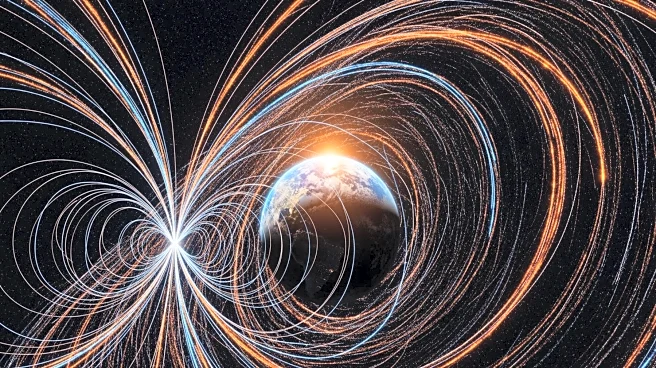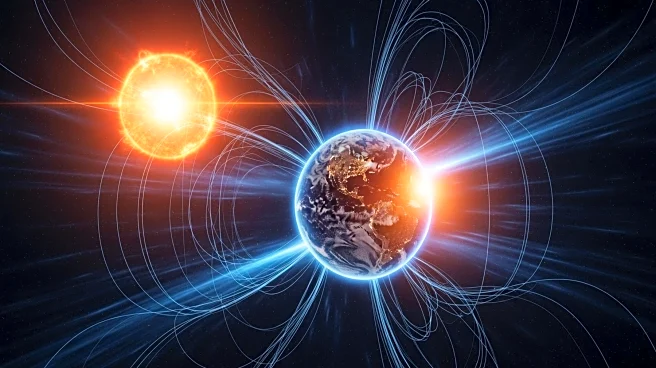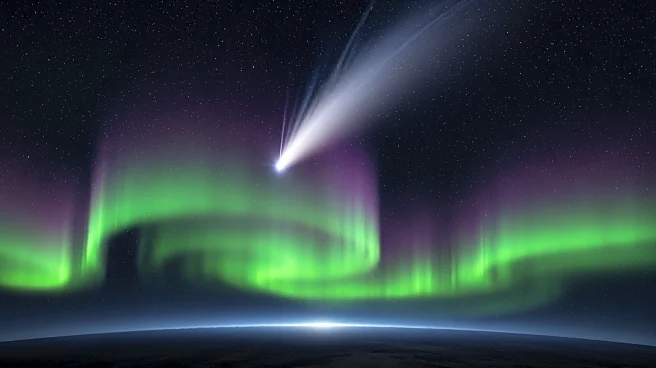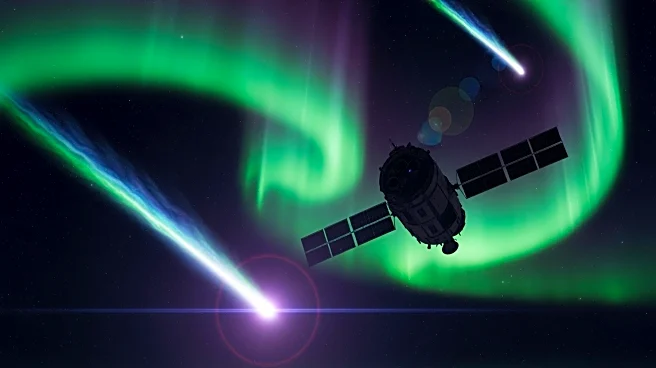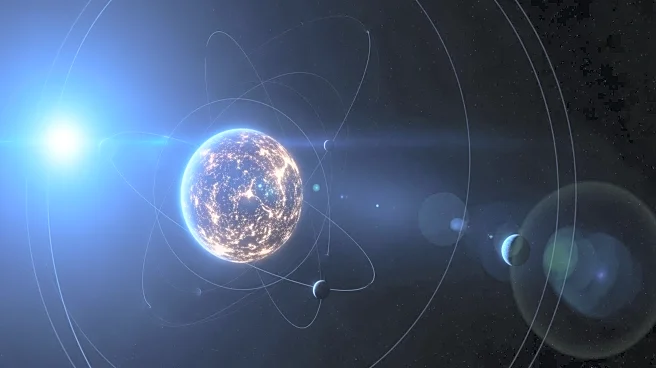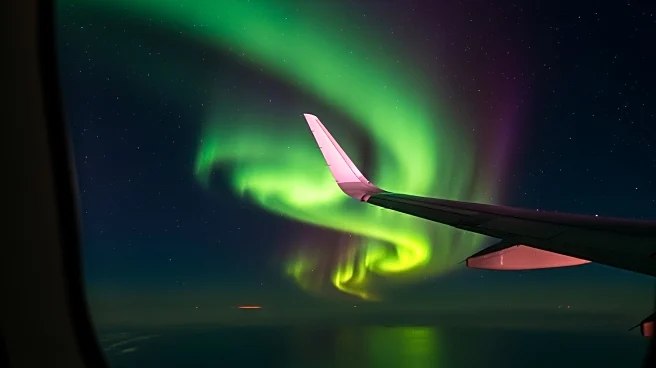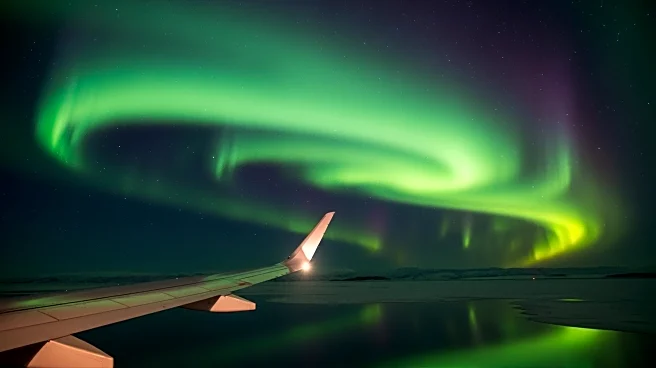What's Happening?
On November 20, Earth was unexpectedly hit by a stealth solar storm, which did not trigger a geomagnetic storm but contributed to auroras visible at mid-latitudes. These stealth coronal mass ejections
(CMEs) are challenging for space-weather forecasting due to their faint signatures, requiring multi-wavelength observations for detection. The storm was reported by NOAA's Space Weather Forecasters, who noted a spike in the solar wind's magnetic field and increased wind speeds. Stealth CMEs typically occur during the declining phase of the sun's 11-year cycle, erupting quietly without the usual bright flares or ultraviolet light changes.
Why It's Important?
Stealth CMEs pose significant challenges for space-weather forecasting, as their faint signatures make them difficult to detect before they impact Earth. These events can disrupt solar wind conditions, affecting satellite operations and communication systems. The recent stealth CME highlights the need for improved forecasting techniques to mitigate potential disruptions. As the sun enters the declining phase of its cycle, the frequency of such events may increase, necessitating advancements in space-weather prediction to protect critical infrastructure.
What's Next?
The occurrence of stealth CMEs may prompt further research into improving detection methods, potentially leading to advancements in space-weather forecasting technology. Scientists may focus on developing multi-angle observation techniques to better identify these faint solar eruptions. Additionally, increased awareness of the potential impacts of stealth CMEs could lead to enhanced preparedness measures for satellite operators and communication networks.
